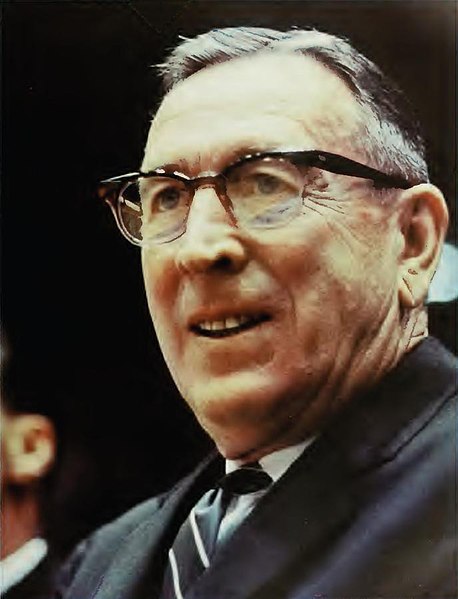Leading with Tough Choices: Navigating Challenges and Opportunities
The Importance of Making Tough Choices as a Leader
Leadership is a complex and demanding role that requires individuals to make tough choices on a regular basis. As a leader, you are responsible for guiding your team or organization towards success, but this often means making difficult decisions that have significant consequences. Whether it’s deciding how to allocate limited resources, choosing between conflicting priorities, or navigating ethical dilemmas, making tough choices is an unavoidable part of leadership.
The demands of leadership have only intensified in recent years, as organizations face unprecedented levels of uncertainty and change. Leaders must navigate a constantly evolving landscape, while also addressing the needs and concerns of their employees, customers, and stakeholders. This can be a daunting task, especially when tough choices must be made in the face of limited information or conflicting opinions.
The ability to make tough choices is a critical skill for any leader to possess. It requires a combination of emotional intelligence, critical thinking, and decisiveness, as well as a deep understanding of the organization’s values and goals. In this article, we will explore the importance of making tough choices in leadership, and offer practical guidance and strategies for developing this essential skill.
As we delve deeper into this topic, it is important to note that making tough choices can be emotionally challenging for leaders. It can be difficult to weigh the potential risks and benefits of different options, and to accept the consequences of one’s decisions. However, by developing the ability to make tough choices, leaders can gain greater clarity, confidence, and resilience in their roles.
In the following sections, we will explore what “tough choices” means in the context of leadership, the key traits and skills required to make tough choices, and the factors that leaders must consider when making these decisions. We will also provide real-life examples of leaders who have successfully made tough choices, and offer practical strategies for overcoming resistance to making tough choices. By the end of this article, you will have a deeper understanding of the importance of making tough choices as a leader, and the tools and techniques required to do so effectively.
Understanding Tough Choices in Leadership
In the context of leadership, tough choices refer to decisions that have significant consequences and are often accompanied by uncertainty, risk, or conflict. These decisions can range from selecting a strategy for the organization to navigating interpersonal dynamics within the team. Making tough choices is a fundamental aspect of leadership, as leaders are responsible for guiding their organizations through a variety of challenges and opportunities.
There are several reasons why leaders are often required to make tough choices. One key factor is limited resources. Leaders must balance competing demands for time, money, and other resources, and allocate them in ways that will have the greatest impact on the organization’s goals. This can involve making trade-offs and difficult prioritization decisions that affect multiple stakeholders.
Another factor that contributes to tough choices in leadership is conflicting priorities. Leaders must balance the needs and goals of various departments or teams, as well as the needs of customers, shareholders, and other stakeholders. When priorities conflict, leaders must decide which goals to prioritize and which to defer or abandon.
Finally, ethical considerations can also create tough choices for leaders. They may be faced with situations where the right course of action is not clear, or where competing values must be weighed against each other. In these situations, leaders must have a strong moral compass and the ability to make decisions that align with the organization’s values and mission.
The potential consequences of avoiding tough choices as a leader can be significant. It can lead to missed opportunities, wasted resources, and lost trust among stakeholders. Leaders who are indecisive or unwilling to make tough choices can create a culture of uncertainty and fear within their organizations, which can ultimately erode morale and productivity.
To effectively make tough choices, leaders must develop the ability to balance multiple factors and make decisions that align with the organization’s goals and values. In the following sections, we will explore the traits and skills required to make tough choices, and offer practical strategies for developing this essential leadership skill.
Developing the Ability to Make Tough Choices
The ability to make tough choices is a critical skill for leaders to possess. It requires a combination of emotional intelligence, critical thinking, and decisiveness, as well as a deep understanding of the organization’s values and goals. In this section, we will explore each of these traits and skills in more detail, and offer practical strategies for developing them.
Emotional intelligence
Emotional intelligence is the ability to understand and manage one’s own emotions, as well as the emotions of others. This skill is essential for leaders who must navigate complex interpersonal dynamics and build strong relationships with their teams and stakeholders. Leaders with high emotional intelligence are better equipped to handle tough choices because they are able to stay calm and focused in high-pressure situations, and are better able to communicate with others in a way that builds trust and respect.
To develop emotional intelligence, leaders can engage in practices such as mindfulness meditation, journaling, or seeking feedback from others. These practices can help leaders become more self-aware and better able to regulate their emotions in challenging situations.
Critical thinking
Critical thinking is the ability to analyze information and make reasoned judgments. This skill is essential for leaders who must weigh the potential risks and benefits of different options when making tough choices. Leaders with strong critical thinking skills are able to consider multiple perspectives, identify potential biases or assumptions, and evaluate the potential consequences of their decisions.
To develop critical thinking skills, leaders can engage in activities such as reading, problem-solving exercises, or engaging in debates or discussions. These practices can help leaders become more analytical and better able to evaluate complex information.
Decisiveness
Decisiveness is the ability to make decisions quickly and effectively. This skill is essential for leaders who must make tough choices in a timely manner. Leaders who are indecisive or take too long to make decisions can create a culture of uncertainty and fear within their organizations, which can ultimately erode morale and productivity.
To develop decisiveness, leaders can engage in practices such as role-playing exercises, decision-making simulations, or seeking feedback from others. These practices can help leaders become more comfortable with making decisions quickly and confidently.
In addition to these specific skills, leaders must also have a deep understanding of their organization’s values and goals. This understanding allows leaders to make tough choices that align with the organization’s mission and vision, and to communicate these choices effectively to others.
Overall, developing the ability to make tough choices requires practice, feedback, and a willingness to learn and grow as a leader. By focusing on emotional intelligence, critical thinking, decisiveness, and a deep understanding of organizational values and goals, leaders can become more effective at making tough choices and guiding their organizations towards success.
Factors to Consider When Making Tough Choices
When making tough choices as a leader, there are several factors that must be taken into consideration. These factors can vary depending on the specific situation, but generally fall into three main categories: organizational values, stakeholder interests, and long-term impact.
Organizational values
One of the most important factors to consider when making tough choices is the organization’s values. Leaders must ensure that their decisions align with the organization’s mission and values, and that they do not compromise the organization’s integrity or reputation. When faced with a tough choice, leaders should ask themselves whether their decision reflects the organization’s values, and whether it will contribute to the organization’s long-term success.
Stakeholder interests
Another important factor to consider when making tough choices is the interests of various stakeholders. Leaders must balance the needs and goals of employees, customers, shareholders, and other stakeholders, and make decisions that are in the best interests of the organization as a whole. When faced with a tough choice, leaders should consider how it will affect each stakeholder group, and whether the benefits outweigh the costs.
Long-term impact
Finally, leaders must consider the long-term impact of their decisions. Tough choices may have immediate benefits, but they may also have unintended consequences that impact the organization’s success in the future. Leaders must be able to anticipate these consequences and make decisions that minimize the risks and maximize the benefits over the long term.
When making tough choices, leaders must also be able to balance these factors and make decisions that reflect the organization’s overall goals and priorities. This requires a combination of analytical thinking, strategic vision, and strong communication skills. In the following sections, we will explore each of these skills in more detail, and offer practical strategies for developing them.
Analytical thinking
Analytical thinking is the ability to analyze information and make informed judgments based on data and evidence. This skill is essential for leaders who must make tough choices based on complex information. Leaders with strong analytical skills are able to consider multiple perspectives, identify potential biases or assumptions, and evaluate the potential consequences of their decisions.
To develop analytical thinking skills, leaders can engage in activities such as reading, problem-solving exercises, or engaging in debates or discussions. These practices can help leaders become more analytical and better able to evaluate complex information.
Strategic vision
Strategic vision is the ability to see the big picture and anticipate the long-term impact of decisions. This skill is essential for leaders who must make tough choices that will impact the organization’s success over time. Leaders with strong strategic vision are able to identify trends and opportunities, develop plans for growth and innovation, and anticipate potential obstacles or challenges.
To develop strategic vision, leaders can engage in activities such as scenario planning, trend analysis, or seeking feedback from others. These practices can help leaders become more forward-thinking and better able to anticipate future challenges and opportunities.
Communication skills
Effective communication is essential for leaders who must make tough choices that impact their teams and stakeholders. Leaders with strong communication skills are able to articulate their decisions clearly and concisely, and to listen actively to others’ perspectives and concerns. Effective communication can help build trust and buy-in among stakeholders, and can ensure that tough choices are understood and accepted by those affected by them.
To develop communication skills, leaders can engage in activities such as public speaking, conflict resolution, or seeking feedback from others. These practices can help leaders become more effective communicators and better able to navigate complex interpersonal dynamics.
By balancing these factors and developing these skills, leaders can become more effective at making tough choices and guiding their organizations towards success.
Overcoming Resistance to Tough Choices
Making tough choices as a leader can be emotionally challenging. It can be difficult to weigh the potential risks and benefits of different options, and to accept the consequences of one’s decisions. However, leaders must be able to overcome resistance to making tough choices in order to be effective in their roles. In this section, we will explore common sources of resistance to making tough choices, and offer strategies for overcoming this resistance.
Fear of failure
One common source of resistance to making tough choices is the fear of failure. Leaders may worry that their decisions will be the wrong ones, or that they will be criticized or punished for making tough choices that have negative consequences. To overcome this fear, leaders must cultivate a growth mindset that embraces the possibility of failure as a necessary part of learning and growth.
To develop a growth mindset, leaders can engage in practices such as reframing challenges as opportunities, seeking feedback from others, or engaging in activities that stretch their comfort zones. These practices can help leaders become more resilient and better able to learn from failure.
Backlash from stakeholders
Another source of resistance to making tough choices is the potential backlash from stakeholders. Leaders may worry that their decisions will upset employees, customers, or other stakeholders, and may avoid making tough choices as a result. To overcome this resistance, leaders must be willing to communicate their decisions clearly and transparently, and to listen actively to feedback from others.
To develop effective communication skills, leaders can engage in activities such as conflict resolution, public speaking, or seeking feedback from others. These practices can help leaders become more confident and effective communicators, and better able to navigate challenging conversations.
Uncertainty
Finally, leaders may experience resistance to making tough choices due to uncertainty about the outcome of their decisions. Leaders may worry that they do not have enough information or that they are not able to accurately predict the consequences of their decisions. To overcome this resistance, leaders must develop their analytical thinking skills and their ability to evaluate potential outcomes.
To develop analytical thinking skills, leaders can engage in activities such as problem-solving exercises, data analysis, or scenario planning. These practices can help leaders become more comfortable with uncertainty and better able to make informed judgments based on available information.
Ultimately, overcoming resistance to making tough choices requires a combination of self-awareness, resilience, and strategic thinking. Leaders must be able to manage their emotions, communicate effectively with others, and balance multiple factors when making decisions. By developing these skills and strategies, leaders can become more effective at making tough choices and guiding their organizations towards success.
Case Studies and Examples
Real-life examples of leaders who have successfully made tough choices can provide valuable insights and lessons learned that can be applied to other leadership situations. In this section, we will provide several case studies and examples of leaders who have made tough choices, and explore the challenges they faced and the strategies they used to overcome them.
Steve Jobs, Apple
One of the most famous examples of a leader making tough choices is Steve Jobs, the co-founder and CEO of Apple. Jobs was known for his bold vision and uncompromising leadership style, which often led to tough choices and significant risks.
One example of a tough choice made by Jobs was the decision to shift Apple’s focus from computers to consumer electronics. In 2001, Jobs introduced the iPod, a revolutionary device that transformed the music industry and set the stage for Apple’s later success with the iPhone and iPad. However, this decision required significant investment and risk, and was met with skepticism by some members of the Apple team.
To overcome this challenge, Jobs relied on his strong vision and communication skills to rally the team around his idea. He also relied on his deep understanding of consumer needs and preferences, and his willingness to take calculated risks.
Howard Schultz, Starbucks
Another example of a leader making tough choices is Howard Schultz, the former CEO of Starbucks. Schultz faced a significant challenge in 2008, when the global financial crisis hit and consumer spending on luxury items like coffee declined.
To overcome this challenge, Schultz made a tough choice to close over 900 underperforming Starbucks locations and refocus the company’s strategy on delivering a more personalized customer experience. He also introduced new products and services, such as the Starbucks mobile app, that leveraged technology to enhance the customer experience.
To make this tough choice, Schultz relied on his ability to think strategically and to communicate effectively with his team and stakeholders. He also relied on his deep understanding of the Starbucks brand and customer base, and his willingness to take bold action in the face of uncertainty.
Satya Nadella, Microsoft
A more recent example of a leader making tough choices is Satya Nadella, the CEO of Microsoft. When Nadella took over as CEO in 2014, Microsoft was facing significant challenges in the face of competition from companies like Google and Apple.
To overcome these challenges, Nadella made a tough choice to shift Microsoft’s strategy from a focus on Windows to a focus on cloud computing and services. This decision required significant investment and a cultural shift within the organization, but ultimately helped Microsoft regain its position as a leader in the technology industry.
To make this tough choice, Nadella relied on his ability to think strategically and to communicate effectively with his team and stakeholders. He also relied on his deep understanding of the technology industry and his willingness to take risks and embrace new ideas.
These case studies and examples demonstrate the importance of making tough choices as a leader, and the strategies and skills required to do so effectively. By studying these examples and applying the lessons learned, leaders can become more effective at making tough choices and guiding their organizations towards success.
Embracing Tough Choices: Driving Organizations towards Success
Leadership demands that we make tough choices. Leaders are responsible for guiding their organizations through a variety of challenges and opportunities, and must be able to balance multiple factors when making decisions. Making tough choices requires a combination of emotional intelligence, critical thinking, decisiveness, and a deep understanding of organizational values and goals.
To effectively make tough choices, leaders must also be able to overcome resistance to making these choices. This resistance may come from fear of failure, backlash from stakeholders, or uncertainty about the outcome of decisions. By developing self-awareness, resilience, and strategic thinking skills, leaders can become more effective at overcoming this resistance and making tough choices that align with their organization’s goals and values.
Real-life examples of leaders who have successfully made tough choices provide valuable insights and lessons learned that can be applied to other leadership situations. These examples demonstrate the importance of having a strong vision, effective communication skills, and the willingness to take calculated risks and embrace new ideas.
Overall, leadership demands that we make tough choices, but it is through these tough choices that we can create positive change and drive our organizations towards success. By developing the skills and strategies outlined in this article, leaders can become more effective at making tough choices and guiding their organizations towards a brighter future.







